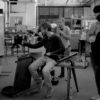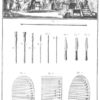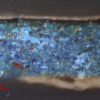Blogs

Re-enactment in Teaching Art History (Part 1)
By Sven Dupré In the past year, the ARTECHNE team has become increasingly involved in the integration of enactment and performance in research and teaching; it has been a real avalanche of events – the development of new courses, academic workshops, and summer schools – going at a pace which is sometimes hard to keep…
Read more
Rock-paper-scissors. Bending Tools and the Rules
By Thijs Hagendijk Tools are inert. At least, that is how they appear to us, that is how we buy them, and that is how we need them to be. We use tools to carve, cut and shape materials. We use a hammer to drive nails into walls, a drill bit to make holes in…
Read more
The Making of Technique in the Arts: Concepts and Practice from the Sixteenth to the Twentieth Century
By Marieke Hendriksen The terms ‘technique’ and ‘technical’ are used widely in relation to art, art history and science today, both to refer to the technical analysis of artworks and to a more holistic analysis of creative processes. Yet we do not have a history of the shifting meanings of the term ‘technique’ in the…
Read more
Early Scientific Analysis of Historical Pigments during the long 19th Century
By Mariana Pinto Pigment analyses can be considered nowadays as a fundamental step in the conservation of artworks (image 1). In the first place, they provide us with information about the degree of deterioration of a painted surface and therefore play an important role in the decision-making process for conservation treatment. Moreover, pigment analyses can…
Read more
Seasonality and the (Re)creation of Early Modern Color Worlds
*This blog was originally published on The Recipes Project on 25/05/2017* By Jenny Boulboullé Color played an important role in the early modern world across a number of areas from arts and crafts to Christian religion to politics to natural history and philosophy. In recent years, scholars have begun to explore how early modern men…
Read more

